Hoka One One Evo Mafate 2
Test Locations: Gunnison — Crested Butte, Colorado & Moab, Utah
Test Duration: 81 miles
Stated Stack Height: 35 mm (heel) / 31 mm (forefoot)
Stated Heel-to-Toe Drop: 4 mm
- Stated Features:
Patented MATRYX® technology offers a lightweight, durable and secure fit - Breathable toe box provides a comfortable fit with improved forefoot flexibility
- Gusseted tongue prevents migration across the instep
Early stage Meta-Rocker geometry optimizes heel-to-toe transitions - Lightweight compressed EVA midsole provides comfort
- Rubberized foam midsole / outsole provides responsiveness and resistance to compression
- Sculpted arch pod includes support for medial control
- 5mm Vibram® Megagrip rubber outsole
- Sculpted, aggressive lugs for the most critical conditions
- Rubber composition for unparalleled grip on wet rocks
Reviewer: 6’1″, 185 lbs / 185 cm, 84 kg
Size Tested: US Men’s 11.5
Stated Weight per Shoe (US Men’s Size 9): 292 g / 10.3 oz
Blister Measured Weight (US Men’s 11.5):
- Shoes + Laces: 296 g (left) & 309 g (right)
- Insoles: 22 g (left) & 21 g (right)
- Total: 318 g (left) & 330 g (right)
MSRP: $170
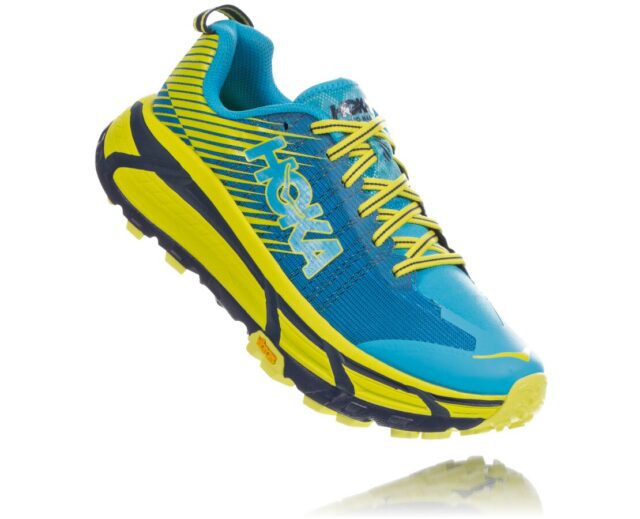
Intro
With most trail shoes, I feel like I usually have to compromise on either maximum traction or maximum cushion — which is why I was particularly excited to try out the Hoka One One Evo Mafate 2.
With a stack height of 35 mm in the heel and 31mm in the forefoot, the Evo Mafate 2 is built to be comfortable over long distances. At the same time, its 5 mm lugs, Vibram MegaGrip rubber compound, and generous negative / open space in between lugs make for one of the most aggressive tread patterns that I’ve found on a shoe with this level of cushioning. All this and a reported sub-300-gram weight made the Evo Mafate 2 a must-try in my book.
Knowing Hoka’s reputation among the ultramarathon community, the Evo Mafate seemed like it might just be the ideal shoe for running long, technical mountain races. I’ve now spent a good amount of time in the shoe to see if it would live up to the hype, and in this review, I’ll break down where the Evo Mafate 2 shines, as well as some of its potential limitations.
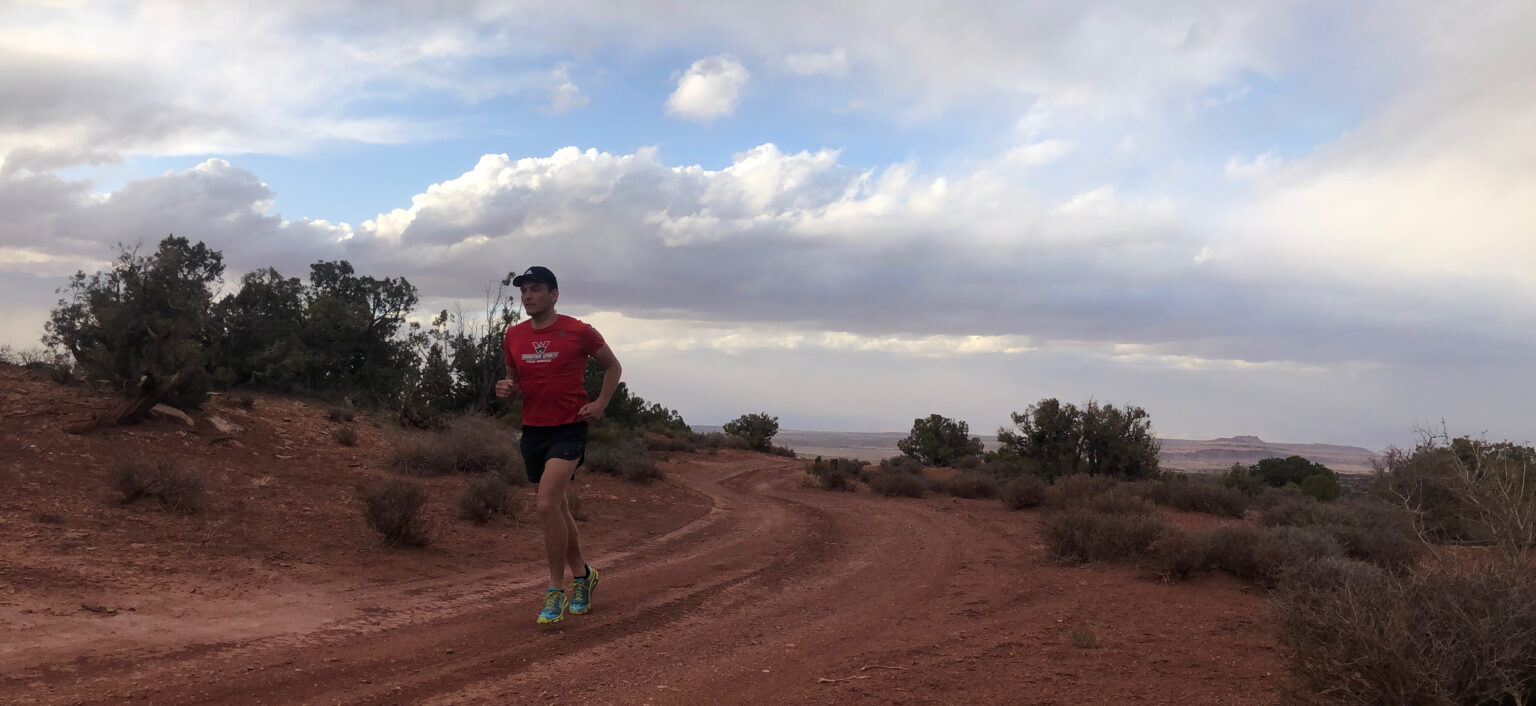
Hoka One One Evo Mafate 2 vs. Evo Mafate
Although I didn’t have the pleasure of trying the original Evo Mafate (see our full review here), on paper it seems that not a whole lot has changed in the second version. The most significant alteration in the Evo Mafate 2 is in the upper. For most of the upper, Hoka stayed with the durable, less flexible Matryx material of the previous iteration, but switched to a more flexible and breathable material for the toe box. This new material is mostly intended to improve fit / comfort in the forefoot.
Fit
When searching for a new shoe, it’s always recommended to try them on before purchasing. That said, I can share my opinion on how the Evo Mafate 2 fits my feet and draw comparisons to other shoes in my quiver. For reference, I have a wide, high-volume foot and high arches. While I like a wide toe box, I also find it important for a shoe to be secure and supportive around the midfoot to ensure that my foot is stable on rugged terrain.
Overall, the Evo Mafate 2 felt a bit narrow on my wider feet. Judging from prior experience, the Evo Mafate is about average width for a Hoka. It feels wider than the Hoka Speedgoat, but it doesn’t come near the wide fit of an Altra shoe. That said, it seems to be more of an issue with the shape of the toe box for me than the actual width of the shoe. Unlike a shoe from Topo Athletic or Altra, the Evo Mafate 2’s toebox begins to taper off much earlier on the lateral edge. With the toe box being more pointed than I’m used to, my toes feel slightly restricted — especially when my feet shift forward in the shoe on downhills.
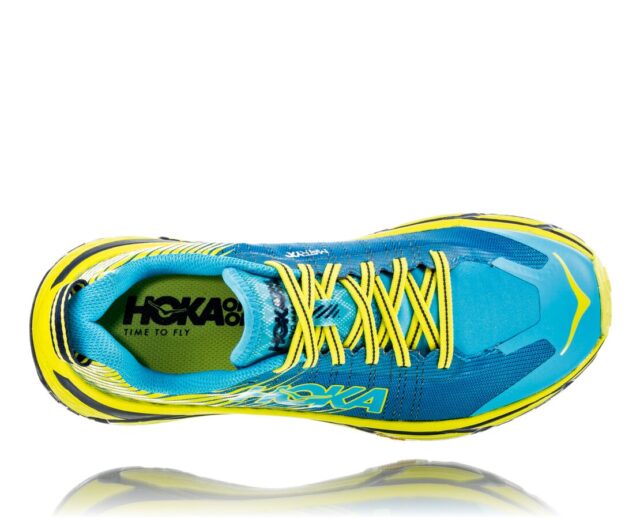
In both the midfoot and heel, the Evo Mafate’s narrower last makes for a secure fit. I experienced very little slippage in the heel, without it feeling too stiff or restrictive. The shoe’s elastic gusseted tongue in the midfoot ties into the midsole in a comfortable, secure fashion. The gusseted tongue concept is something that I first experienced in Salomon shoes like the Sense Ride and S/LAB Ultra. Although the Mafate’s tongue doesn’t feel quite as secure as Salomon’s “Endofit” gusseted tongue design, I still found it to be an excellent feature. This wrap-around tongue design is especially helpful on off-camber terrain. It helped lock in my feet and keep them from rotating or slipping sideways in the shoe like I have experienced in a shoe like the Altra Timp 2.0. I found the Evo Mafate to have adequate arch support, but it did not quite suit my high arches the way that the Salomon shoes have.
Another way that I felt the Evo Mafate 2’s fit could have been improved was in the length of the shoe. In my experience, the Evo Mafate 2 runs a bit long — so if you’re usually in between sizes, I would recommend sizing down. If the Evo Mafate 2 was wider in the toes, I would consider sizing down to a US Men’s 11 from my usual 11.5. Since it’s already a bit narrow for my feet, I think 11.5 is still the best option for me. If I were to go down a half size, the widest part of my foot would only be moved further forward in the tapered toe box.
Weight
The Evo Mafate 2 reportedly weighs in at 292 g / 10.3 oz for a US Men’s Size 9 (my size 11.5 came in around 325 g per shoe). Although that isn’t incredibly light, it’s actually quite good for the amount of cushioning that the Evo Mafate 2 provides. Here’s how the Evo Mafate 2 stacks up against shoes of similar cushioning (all stated weights are based on a US Men’s size 9).
278 g / 9.8 oz – Topo Athletic Mtn Racer
281 g / 9.9 oz – Hoka One One Evo Speedgoat
290 g / 10.2 oz – Salomon Sense Ride 4
292 g / 10.3 oz – Hoka One One Evo Mafate 2
301 g / 10.6 oz – Brooks Caldera 5
301 g / 10.6 oz – Nike Wildhorse 7
307 g / 10.8 oz – New Balance Fresh Foam More Trail v1
329 g / 11.6 oz – Altra Olympus 4
Although there are plenty of lighter shoes than the Hoka Evo Mafate 2, not many can match the amount of cushioning and protection that the Evo Mafate 2 provides. For a shoe with over 30 mm of cushion, I consider 10.3 oz / ~300 g to be very light. More importantly, I never feel bogged down in this shoe — if anything, it felt much lighter than in other comparable shoes that I have tried, such as the New Balance Fresh Foam More Trail v1.
Upper
The rigid Matryx material that makes up most of the Evo Mafate’s upper is paired with a more forgiving material over the top of the forefoot. Matryx is a durable, less stretchy material that gives this shoe a secure-feeling fit around the midfoot. When the laces are pulled tight, the Matryx upper firmly wraps around each side of the midfoot with very little give. To provide more flexibility in the toe box, a more elastic material extends from the tongue to the toe, stretching across the top of the forefoot. This stretchier fabric makes the narrower toe box more bearable for my wide feet by allowing a bit of lateral stretch. Since my toes were slightly claustrophobic in this shoe, I appreciated having a little bit of stretch across the top of the forefoot.
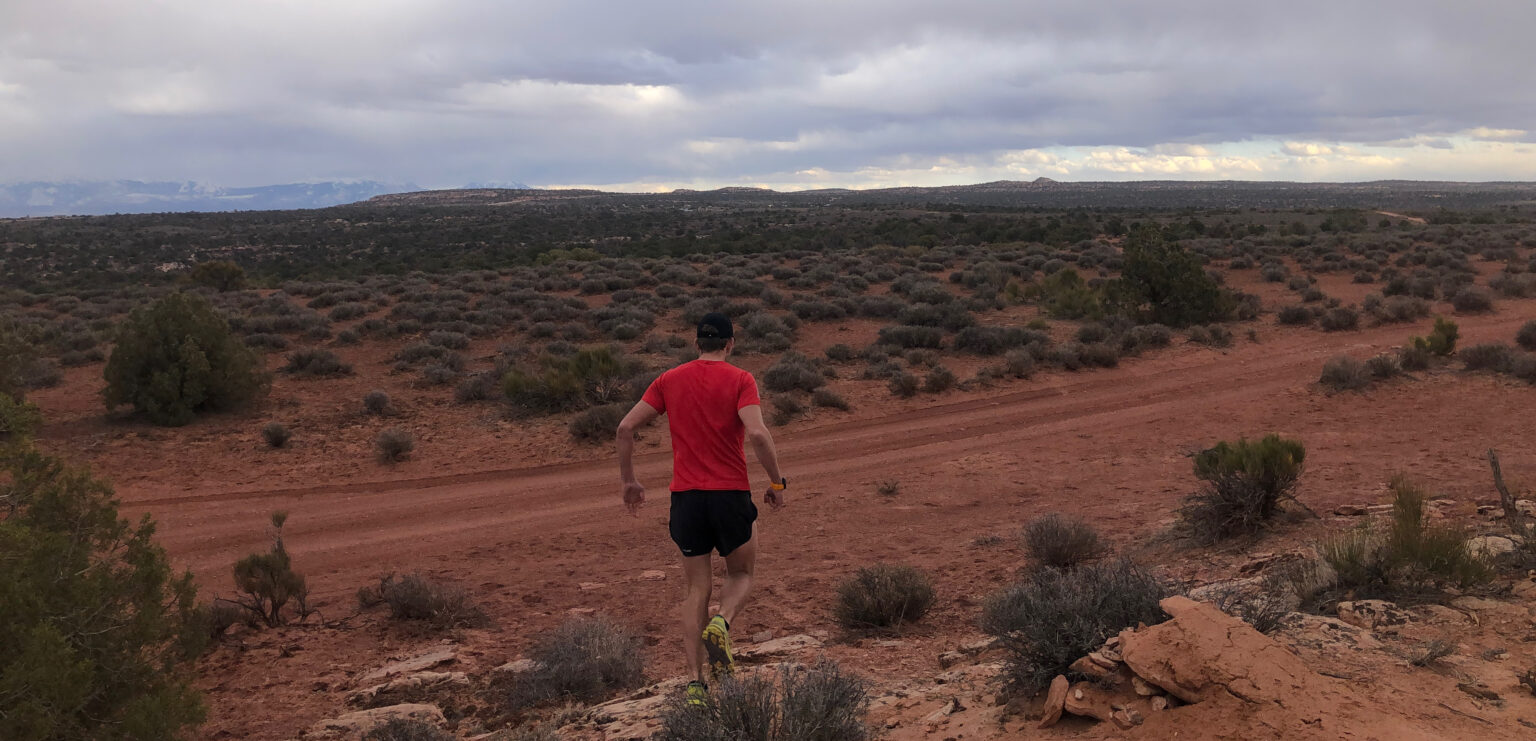
As I mentioned in the “Fit” section, the Evo Mafate 2 has a gusseted tongue similar to the EndoFit tongues found in Salomon shoes. This wrap-around tongue includes an elastic material on either side that helps to center the tongue and secure the foot into the footbed. I found this feature to be both comfortable and helpful on techy trails. The combination of the gusseted tongue and the unyielding Matryx upper material made this shoe feel relatively stable on off-camber, uneven terrain, particularly for how high its stack height is.
The tightly woven upper on the Evo Mafate keeps sand and dust from easily entering the shoe. At the same time, I didn’t seem to hold too much moisture when running in wet conditions. I haven’t gotten the chance to test this shoe in extreme heat, but I don’t see breathability being an issue, either. The biggest thing that I will be watching for in the upper as I continue to put more miles on is signs of wear along the instep. I tend to have shoes blow out along the inside edge where the upper meets the midsole, but so far I have not noticed any concerning abrasion wear on the Evo Mafate.
Midsole
The Evo Mafate 2’s midsole is composed of two types of foam: a lightweight compressed EVA foam that provides a smooth and comfortable ride, and a rubberized foam that makes up the outermost layer of the midsole. Hoka states that this outer layer is slightly more reactive and compression resistant. Since this outer layer of midsole material is exposed as a part of the outsole beneath the midfoot, I can attest to it being fairly durable for midsole cushioning. The few foam lugs along the outsole have not torn off or worn down a significant amount in the first ~80 miles.
Hoka seems to have found a good balance between plush and energetic with the Evo Mafate 2. I feel that the midsole is comfortable and forgiving enough to run for hours on end. At the same time, the Evo Mafate seems to have better energy return in the midsole than a similarly cushioned shoe like the New Balance Fresh Foam More Trail v1. When I wanted to put a little turn of pace in my stride, the Evo Mafate’s midsole gave me just a bit of spring, which is more than I can say for some other maximal shoes like the Fresh Foam More Trail V1. The Evo Mafate 2’s design leans a little more towards racing than its rivals — it is capable of long distances, but without compromising too much on speed / efficiency.
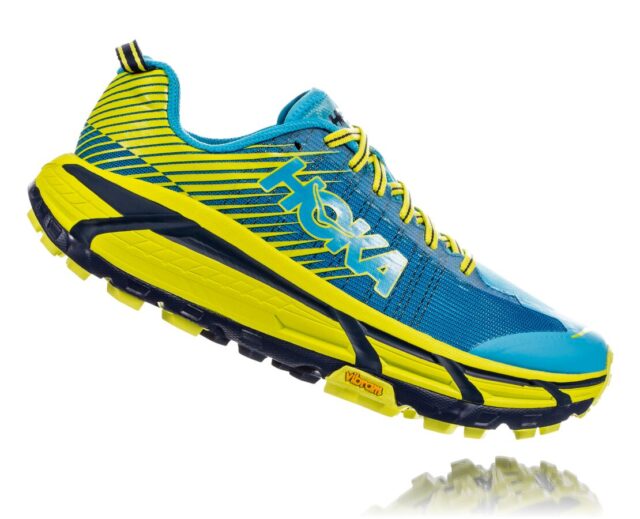
As you might expect in a shoe with ~30mm of cushion, the Evo Mafate provides a fair amount of protection. There is no need for a rock plate. I never had to worry about stepping on sharp rocks, and the cactus that I stepped on in the Moab desert (not recommended) didn’t even come close to poking all the way through the shoe’s midsole.
I also liked the fact that, like many of Hoka’s shoes, the Evo Mafate only has 4 mm of heel-to-toe drop. As a big fan of Altra’s zero-drop shoes, I enjoy a minimal heel-to-toe drop — typically I shoot for somewhere in the 0-4 mm range. Any more and I have to adjust to a more calculated foot strike. When I get tired, I don’t like to think too much about foot placement; the Evo Mafate 2 seems to allow me to naturally land around the midfoot without any additional thought. This isn’t to say that this shoe won’t appease heel or forefoot strikers. I think the 4 mm drop stands in a versatile middle ground and has the potential to work well with most preferences.
Outsole
The Evo Mafate 2 has a Vibram Megagrip outsole with 5 mm lugs. As if 5 mm lugs weren’t already enough, the Evo Mafate also features lots of negative space on the outsole that exaggerates the lug depth. The cutouts and grooves of the outsole probably have more of an impact on the weight and flexibility of the shoe, but they did seem to help with traction in extra soft conditions as well. The Evo Mafate 2’s wide footprint, combined with the deep, paddle-like lugs, allowed it to float through sand quite well while I was running in Moab, especially for a shoe that’s not specifically designed with soft, loose conditions in mind.
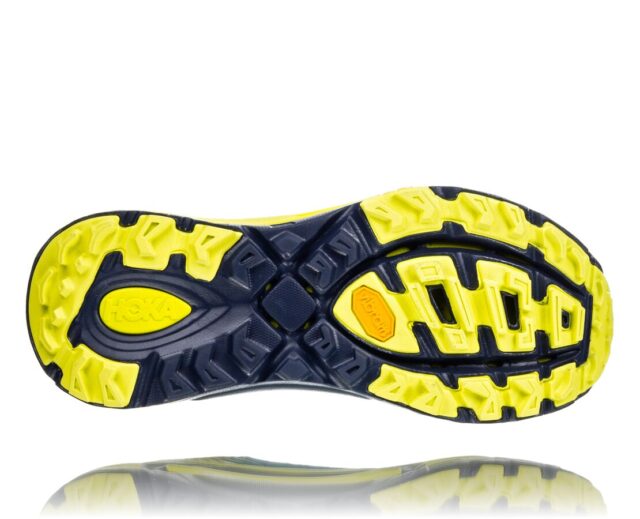
The aggressive outsole of the Evo Mafate gave me reliable traction in all conditions. The MegaGrip rubber compound provided plenty of grip on slickrock, dirt, sand, and loose rock. I also felt in control while running in wet, muddy conditions. Overall, I was extremely happy with this outsole, and felt that it provided best-in-class traction. With that said, I wouldn’t necessarily recommend the Evo Mafate 2 for running on flat, hard-packed, or paved surfaces due to how aggressive the outsole is — although I’m sure anyone could come to that conclusion by just looking at the outsole. Running in the Evo Mafate 2 on pavement is a bit like driving a tank on the highway.
On Trail
With just over 80 miles in the Evo Mafate 2, I have been able to test the shoe on a variety of surfaces and in various conditions. I’ve worn these shoes across the slickrock and sandy washes of Moab, through the springtime mud and snow of Gunnison, over steep and loose terrain, as well as on flat and fast dirt. While I still have many more miles to look forward to in this shoe, I have to admit that there are a lot of things to like about it so far.
I will first note that this shoe handles well in nearly all conditions, whether it’s mud, scree, rocks, dirt, or sand. I especially enjoyed this shoe in the sand, as the wide footprint and deep lugs allowed me to float along the surface much better than a narrower trail shoe with a more minimal outsole tread pattern would. On more technical / rocky terrain, the thick midsole eliminated any need for a rock plate and protected my feet from sharp rocks. The Evo Mafate 2 also did well in mud. I had as much traction as I think I would in a shoe like the Salomon Speedcross and felt that the Evo Mafate 2’s outsole shed mud fairly well without much clumping. In extra sticky, peanut-butter-like mud, this shoe might collect a fair amount of mud, but that’s nearly unavoidable with any shoe in clay-like conditions, especially an all-terrain one like the Evo Mafate 2.
What really excites me about this shoe is its potential for extra-long days in alpine terrain. Being equipped with a confidence-inspiring outsole and enough cushion to make a full day in the mountains comfortable, I can see myself putting a lot of miles in these shoes once the high country melts out. While other shoes such as the Hoka One One Speedgoat 4 are also well suited for this kind of terrain, I feel that the extra cushioning of the Evo Mafate makes it more comfortable and better suited for even longer distances. The Evo Mafate 2 also happens to be lighter than the Speedgoat 4, and only a few grams heavier than the more race-oriented Evo Speedgoat.
While the Evo Mafate 2 was fine for shorter runs and firm trail surfaces, I definitely think it’s better suited to longer distances and more technical terrain. Based on the cushioning alone, I would consider this shoe for a 100-mile ultra. Add the versatile outsole, and it has the potential to be the perfect combo for a mountainous 100-miler. My only hesitation with using this shoe for extra-long distances is the width in the toes (or rather, the lack thereof). As far as toe space, I would much rather wear the Altra Olympus or New Balance More Trail V1. With that said, if you don’t have particularly wide feet and / or your toes taper a good bit from the pinky to the big toe, I would recommend the Evo Mafate 2 over either of these other shoes. It’s lighter, better on technical terrain, and feels more nimble. I am eager to test the Evo Mafate out for some longer distances to see how my feet truly hold up, but I suspect that this might be a shoe for 30-50 miles at most because of the narrow toe box (at least for me and my feet).
Durability
So far I have been very satisfied with the Evo Mafate 2’s durability. Although 81 miles isn’t a ton of miles for these shoes, I haven’t noticed any concerning signs of wear developing — yet. The midsole hasn’t been noticeably compressed, the outsole still has plenty of lug depth, and the upper shows almost no sign of abrasion or wear. Since most shoes blow out on me along the inside edge of the upper, I have been watching for signs of wear around this point. So far, the Matryx upper has no sign of fraying or tearing, and seems like it should last a few hundred miles. The only potential durability concern that I have is a slight separation forming along the instep between the upper and midsole. Because the upper is sewn into the footbed, I don’t foresee this becoming a real issue, but I’m keeping an eye on it. If I find durability to be poor in the miles to come, I will be sure to report back with updates.
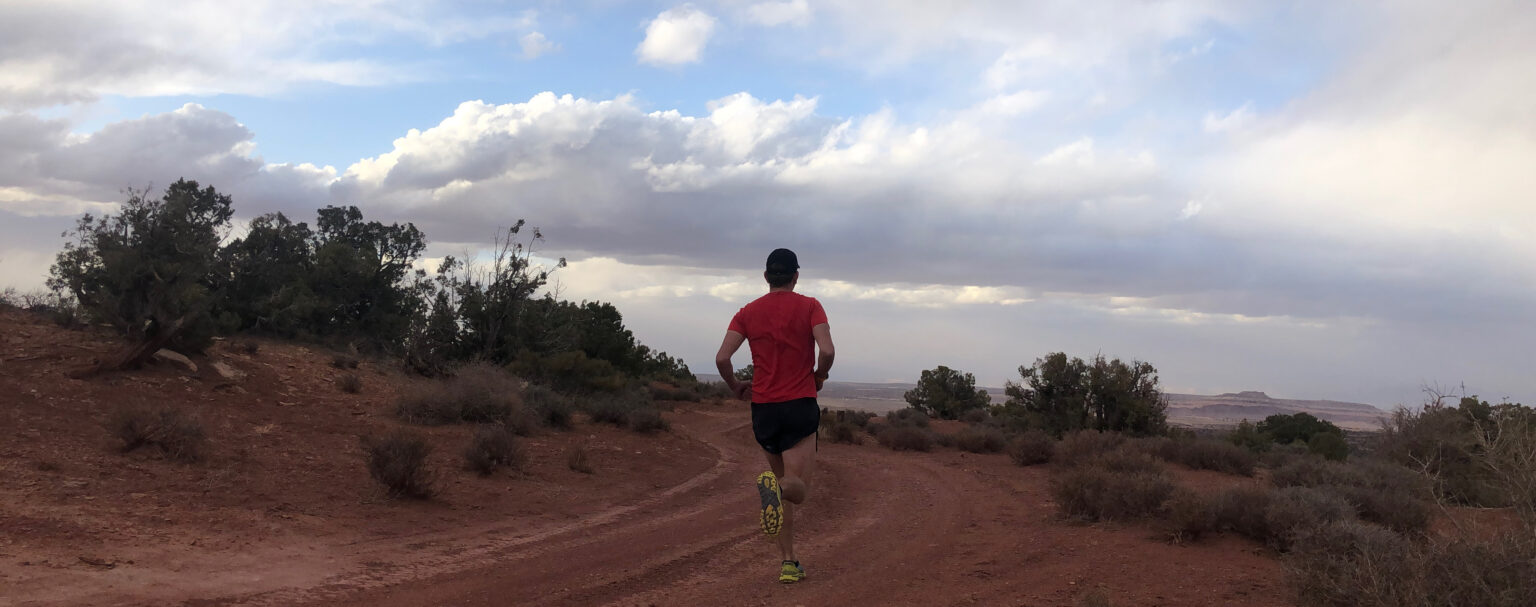
Who’s It For?
The Evo Mafate 2 is for the runner who likes a well-cushioned, high-traction, and secure-feeling shoe for distances up to a marathon, or further. When I think of the ideal candidate for the Evo Mafate 2, I think of someone running a gnarly mountain ultra, such as the Hardrock 100 or UTMB (Ultra Trail du Mont Blanc). If you want a rugged, reliably grippy mountain shoe that can cover a lot of ground, the Evo Mafate 2 is a very good option in my opinion. If you’re looking to run primarily flat, firm, and even terrain, you’ve got better alternatives. And if you’re looking for a light and energetic shoe for shorter, faster efforts, then a much less cushioned shoe like the Salomon S/LAB Sense 8 might be more your style. The Evo Mafate 2 is good on most terrain, but it’s great in soft or loose technical conditions for long periods of time. The only caveat is that the Evo Mafate may feel restrictive in the toes if you have wide feet.
Bottom Line
The Hoka One One Evo Mafate 2 has a lot to like — at least for my preferences. With that said, two potential downsides to consider are (a) price and (b) width. If you aren’t concerned about the narrower toebox and can swing the $170 price tag, this shoe is excellent for long days on various trails. It’s also worth noting that, at $170, the Evo Mafate 2 is actually in a similar price range as many of its high-stack rivals.
Now for the upsides. The Evo Mafate 2’s cushioning provides a smooth, protective ride while maintaining a spring in your stride and not feeling excessively soft or squishy. Its deep, grippy lugs make for tremendous traction on just about all surfaces. The upper is seemingly durable, and provides a secure fit around the midfoot. The Evo Mafate 2 is also lighter than most of its competitors with a similar stack height. All in all, I think the Evo Mafate 2 is a must-try if you are looking for a high-performance, long-distance-oriented, all-terrain shoe.


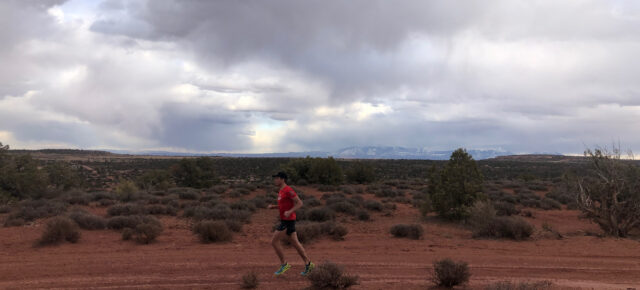
Hi Kevin, what a terrific and helpful review, thank you so much! I would love to hear your opinion as to what the main differences are between the EVO Mafate 2 and the EVO Speedgoat. Would you recommend either of the two for long-distance trail races and why? Any help would be highly appreciated. Thank you and stay safe and healthy!
I love these shoes but can no longer find them in 10.5! I did size down as noted, I wear a 11 clifton for road running.
What replaced this shoe? Why do they do this to us? I find a shoe, wear it for a while and conclude I like it, but then it’s gone! I plan on wearing these for a Colorado trail through hike and want to send a second pair ahead.